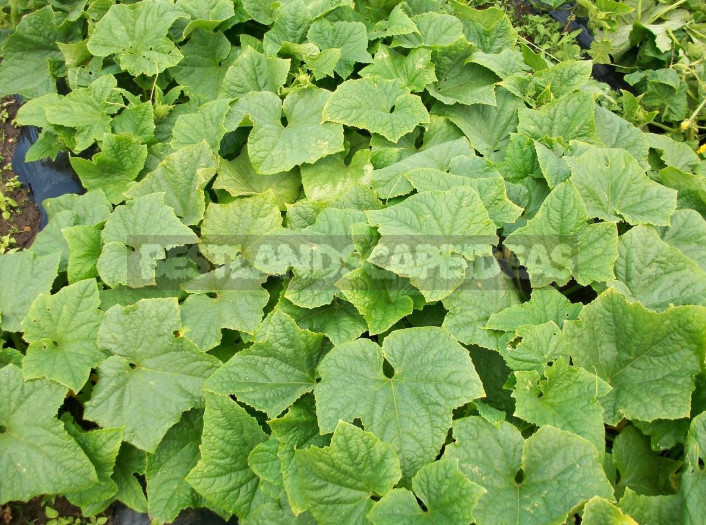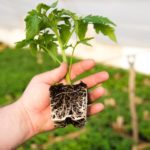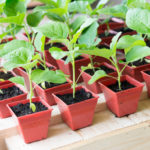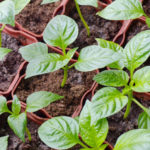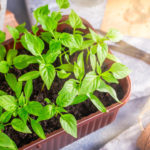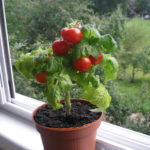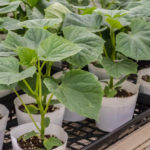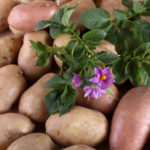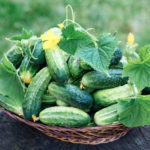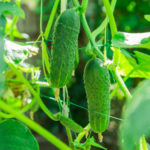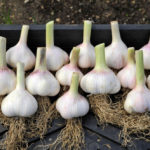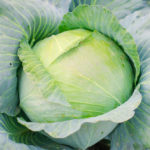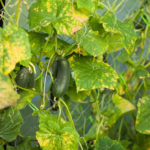Cucumbers are used fresh in the technical ripeness phase – 7-12-day-old cucumbers, so it is important that they are healthy and have a good taste and appearance. Agree that soft, crooked, bitter fruits are not suitable for either salad or pickling. To avoid such troubles, you need to learn more about the biology of the plant, choose suitable varieties and strictly follow agricultural techniques.
Protect cucumber seedlings from diseases
Seedlings should be aligned, which ensures uniform growth and development of plants after planting. Weak, ugly plants, plants with a weak root system are discarded. Standard seedlings should be squat, with short internodes, 25-30 cm (9.8-11.8 ft) high, with 5-6 true leaves of dark green color and a well-developed root system.
We plant seedlings in the ground
We have already decided on the approximate dates of planting, much depends on the weather conditions and the availability of shelters for plants. But before planting seedlings, the soil must be prepared – to add the necessary fertilizers to it.
The advice of the agronomist
- In autumn, we add: 40-50 g/m² (1.4-1.8 oz/m²) of double superphosphate, 20-30 g/m² (0.7-1 oz/m²) of potassium sulfate, organic fertilizers-7-10 kg/m² (15.4-22 lb/m²);
- In spring: organic fertilizer in the well (if not applied in autumn) and nitrogen fertilizer-10-15 g/m² (0.35-0.5 oz/m²), phosphorus and potassium-if not applied in autumn.
Another important point before planting seedlings is transportation. To minimize losses during transportation, it is necessary to stop watering the day before. The water content in the tissues will become less, the plants will become more elastic, less fragile. The place of seedlings in the transport container (case, box) should be dense enough so that the seedlings do not move freely, do not fall. If it is cold during transportation, you can put a bottle of hot water in the box, which will warm the plants and provide them with additional shelter.
Choose a landing scheme
Before planting seedlings, the first thing you need to decide on the spot is the planting scheme. Choosing the optimal standing density is very important. In unheated greenhouses, it is recommended to plant up to 3 plants per 1 m². You can place them on the bed as one or two lines, and the distance between the lines should be about 40-50 cm (1.3-1.6 ft), but the distance between the plants inside the line can be determined independently, based on the area of the greenhouse.
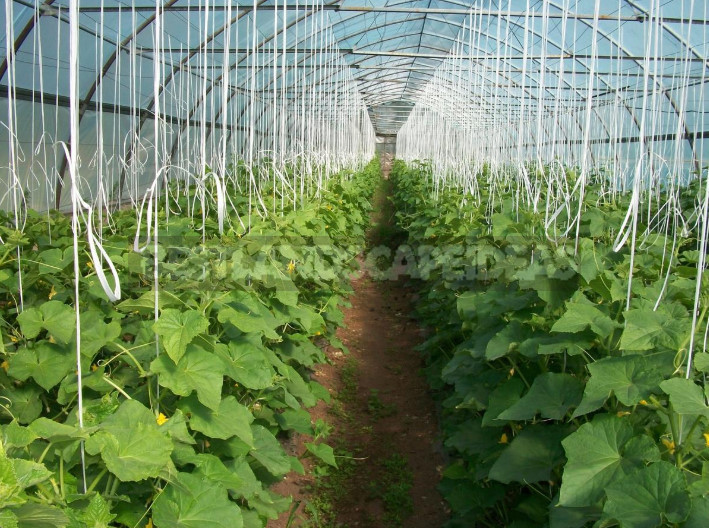
The advice of the agronomist
For example, in a greenhouse of 20 m² (23.9 sq. yard) with a planting density of 3 pcs./m², 60 plants are placed. In the greenhouse, there are 2 beds in two rows-i.e. 4 lines with plants. Thus, each of them is located in 15 factories. For example, the length of a greenhouse is 8 m (8.7 yard), then the distance between the plants in a row will be about 50 cm (1.6 ft). You can plant plants in adjacent rows in a staggered order, which provides easy care and lighting conditions.
On the marked ridges, it is worth digging holes according to the size of the seedling tank. If the fertilizers were not applied in advance, then now is the time to correct the situation, especially with regard to organic matter. Wells should be well spilled, but not filled, as in heavily moistened wells, plants do not take root due to lack of oxygen.
Planting is a very important point, because the plants are very fragile. If the seedlings grow in a pot, then it should be carefully turned over and lightly tapped on the bottom, holding the seedlings with your hand. This will allow you to get a plant with a clod of earth. P for its top: in this case, you will break either the roots or the crown.
Seedlings should be placed in the hole so that the earthen lump is slightly higher or at the level of the bed. Do not bury the plants, even if the seedlings are elongated – in this case, it should be planted at an angle. A small depression of up to 1-2 cm (0.4-0.8 in) is allowed only in very healthy and strong seedlings.
After planting, even in a greenhouse, frost protection may be required. The easiest way to protect fragile seedlings is to provide additional shelter. However, you can use other types of heating: include radiators, incandescent lamps-however, they are not always safe.
There are other, more original methods, where vegetable growers use large stones and containers of water heated during the day, and in some cases place small compost heaps on the paths, which emit heat when overheated.
The advice of the agronomist
Seedlings planted in the open ground need protection from the wind. On well-fertilized soils, it is advisable to grow cucumbers together with other precocious crops – lettuce, radishes, onions, dill. On one bed, you can plant kohlrabi or radish on the edges, and closer to the center-seedlings of lettuce and cucumbers. This creates a favorable climate for cucumbers, and you can collect an additional crop of greens.
It is impossible to tell about all the subtleties of growing our favorite cucumbers in one article. Our advice to gardeners is to read professional literature, follow the news, and pay attention to your plants. Have a good harvest!
We also recommend reading: Planting Cucumber Seedlings in the Ground (Part 1)
